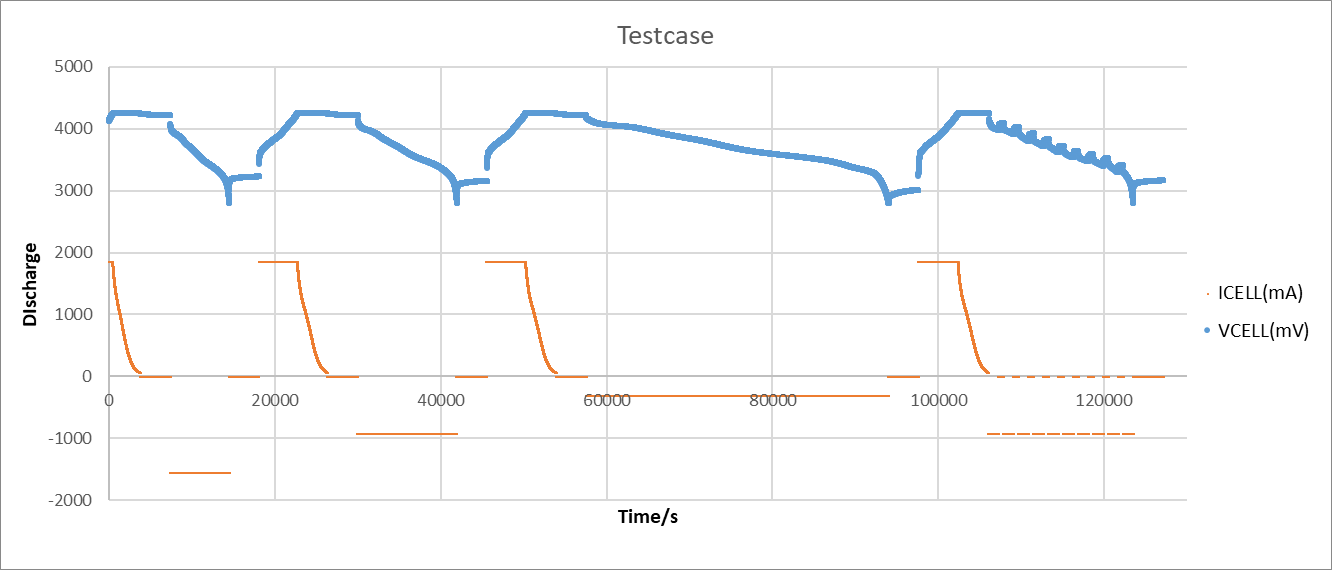SLAAEE3 july 2023 MSPM0L1306 , MSPM0L1306
5.1 Performance Test
See the performance of MSPM0 Gauge L1. Here is the test based on a 3100 mAh Lion battery, under 25°C.
Here is the test pattern:
- Charge battery to full (4.25 V) and rest 1 hour.
- Discharge battery to empty (2.5 V) and rest 1 hour, with 0.5°C / 0.3°C / 0.1°C.
- Pulse discharge battery with 0.3°C.
 Figure 5-1 Battery Test Case
Figure 5-1 Battery Test CaseThe battery full capacity is calculated based on the delta SoC get after 1 hour rest and accumulated capacity. Then, it generates the test result. The conclusions are shown in the test results.
- This solution is suitable for constant low-current discharge. You can find that under 0.1°C discharge, the SoC error is within 2%. When turns to pulse discharge, the SoC error increases.
- The SoC error increases when the current is high, because of the battery model latency. For 0.5°C discharge, the max error is about 9%. For 0.3°C discharge, the max error is about 4%. For 0.1°C discharge, the max error is about 2%.
- This solution is mostly suitable to output steps instead of percentage to the end user. As it does not test current, the SoC may still change when the battery is rest.
 Figure 5-2 Battery Test Result
Figure 5-2 Battery Test ResultThe advantage of this solution is that:
- Simple hardware setup, only need voltage detection. And that means low average current
- Small software code size
- No accumulating error, compared with coulometer
As this solution mostly lies on the accuracy of battery model, temperature or aging are also two important factors for SoC calculation, which are not considered in this solution. To increase this solution accuracy under more conditions, it is suggested to record the SoC parameter trend affected by temperature or aging, and add factors into the battery model calculation.